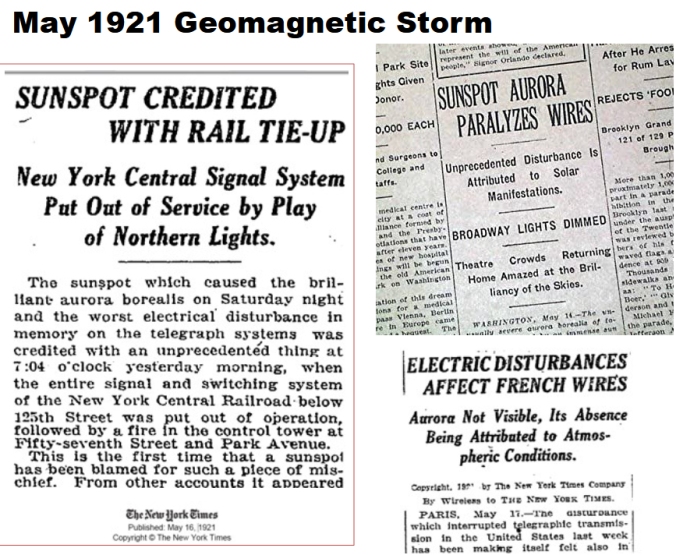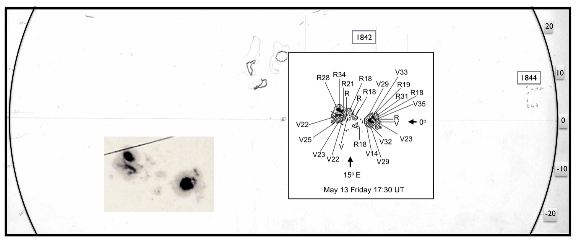Most folks who explore the risks of ElectroMagnetic Pulses and Coronal Mass Ejections have heard of the Carrington Event but there have been others.
From Space Weather Archive, May 12, 2020:
99 years ago this week, people around the world woke up to some unusual headlines.
“Telegraph Service Prostrated, Comet Not to Blame” — declared the Los Angeles Times on May 15, 1921. “Electrical Disturbance is ‘Worst Ever Known'” — reported the Chicago Daily Tribune. “Sunspot credited with Rail Tie-up” — deadpanned the New York Times.
They didn’t know it at the time, but those newspapers were covering the biggest solar storm of the 20th Century. Nothing quite like it has happened since.
It began on May 12, 1921 when giant sunspot AR1842, crossing the sun during the declining phase of Solar Cycle 15, began to flare. One explosion after another hurled coronal mass ejections (CMEs) directly toward Earth. For the next 3 days, CMEs rocked Earth’s magnetic field. Scientists around the world were surprised when their magnetometers suddenly went offscale, pens in strip chart recorders pegged uselessly to the top of the paper.
And then the fires began. Around 02:00 GMT on May 15th, a telegraph exchange in Sweden burst into flames. About an hour later, the same thing happened across the Atlantic in the village of Brewster, New York. Flames engulfed the switch-board at the Brewster station of the Central New England Railroad and quickly spread to destroy the whole building. That fire, along with another one about the same time in a railroad control tower near New York City’s Grand Central Station, is why the event is sometimes referred to as the “New York Railroad Superstorm.”
A photograph (Royal Greenwich Observatory) and sketch (Mount Wilson Observatory) of sunspot AR1842 on May 13, 1921. Source: “The extreme solar storm of May 1921: observations and a complextopological model“
What caused the fires? Electrical currents induced by geomagnetic activity surged through telephone and telegraph lines, heating them to the point of combustion. Strong currents disrupted telegraph systems in Australia, Brazil, Denmark, France, Japan, New Zealand, Norway, Sweden, the UK and USA. The Ottawa Journal reported that many long-distance telephone lines in New Brunswick were burned out by the storm. On some telegraph lines in the USA voltages spiked as high as 1000 V.
During the storm’s peak on May 15th, southern cities like Los Angeles and Atlanta felt like Fairbanks, with Northern Lights dancing overhead while telegraph lines crackled with geomagnetic currents. Auroras were seen in the USA as far south as Texas while, in the Pacific, red auroras were sighted from Samoa and Tonga and ships at sea crossing the equator.
What would happen if such a storm occurred today?....
....MUCH MORE

